Ælfgif-who? provides short biographies of early medieval English women every two weeks. Click on the podcast player if you’d like to hear this newsletter read aloud in my appealing Yorkshire accent.
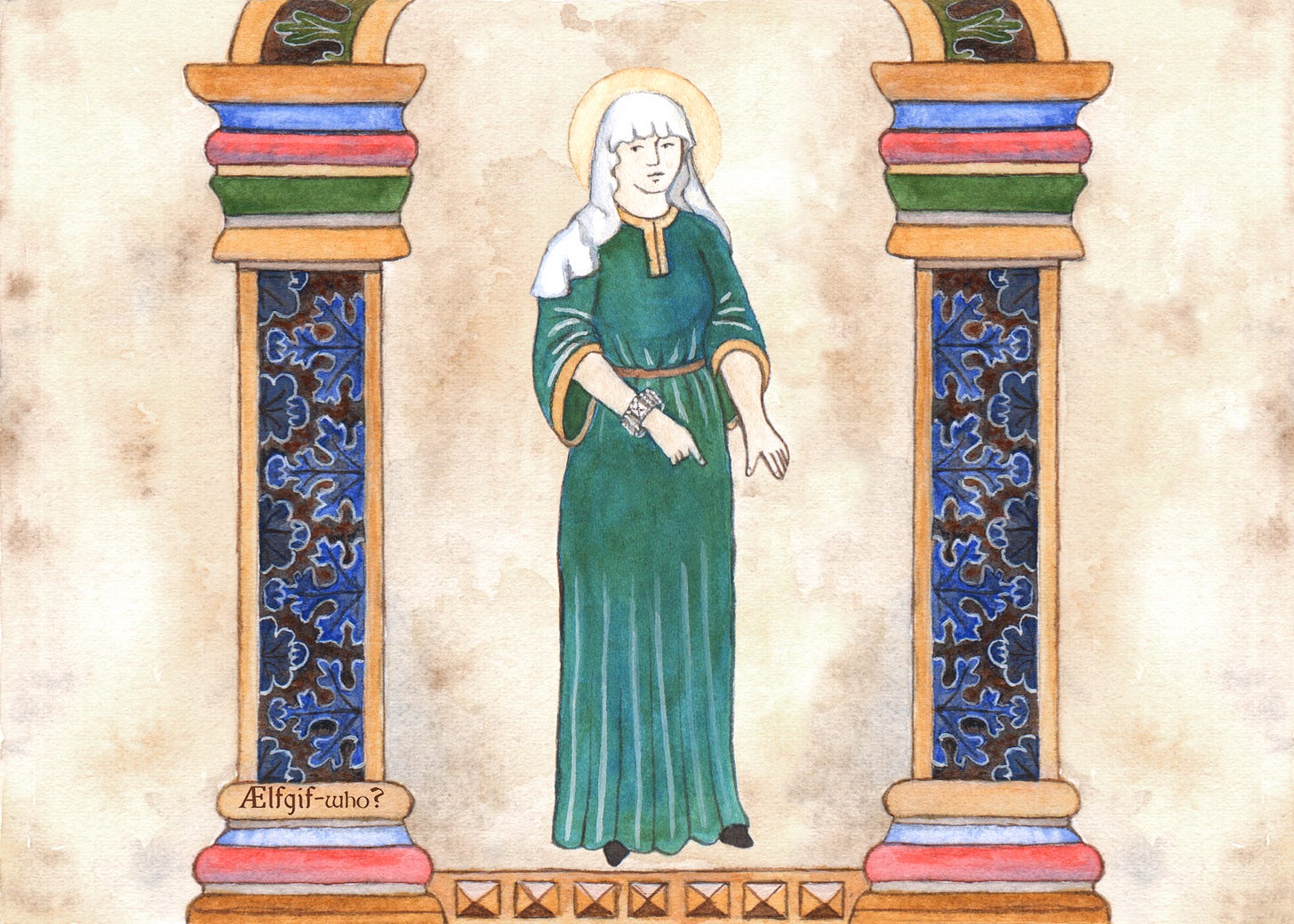
Saint Bega: Begu, Heiu, Beyu or beag? A legendary Irish saint who may have been many women... or a bracelet
The ‘Life of St Bega’ is a literary work that apparently describes the life and miracles of a seventh-century female saint named Bega. It was written by an anonymous monk in around 1200 at the priory of St Bees, Cumbria.
The Life tells us that Bega is the daughter of an Irish king - beautiful, virtuous and skilled. Despite having many potential suitors who were attracted to these qualities, she vowed to remain a virgin. One night, an angel appeared to give her a bracelet, as a token of her betrothal to Christ. However, against her wishes, her father had her betrothed to the son of the king of Norway in exchange for a peace treaty. (This is the main historical anachronism in her story, as the first Scandinavian raid on Ireland did not take place until 795.) After the prince and his retinue arrived in Ireland and everyone was drunk at a feast, a holy voice helped Bega to escape before her wedding, and her bracelet magically unlocked all the doors in the palace. Bega crossed the sea to St Bees where she lived for several years in safety as a hermit.
When St Bees became plagued by pirates, she fled, fearing for her safety and her virginity, which she had pledged to Christ. She left her bracelet behind in Cumbria. She then became the first nun in Northumbria after being consecrated by Saint Aidan of Lindisfarne, establishing a community at Hartlepool. When St Hild took over as abbess she retired to Tadcaster. Bega saw Hild's death in a vision while at the monastery of Hackness, and shortly afterwards she died and was buried there. Bega's bones were translated from Hackness to Whitby in the twelfth century. The anonymous author then relates a series of nine miracles centred on her holy bracelet and her shrine at St Bees.
Though St Bega likely never existed as the woman in the story, her legend has a number of different possible origins. Some features of the story are clearly a conflation of two women discussed in Bede’s Ecclesiastical History: Heiu and Begu. Both women feature in the section of the Ecclesiastical History that discusses the life of St Hild. Heiu’s life maps onto Bega’s: she is said to be the first nun in Northumbria, after she was ordained by Aidan, and she was the founder of the abbey at Hartlepool. She retired soon after, to Tadcaster, and was replaced by Hild. Nothing is known of her early life, and it is uncertain whether she was born in Northumbria or Ireland.
Begu was a nun at Hackness, who had been a nun for over thirty years, when she saw her miraculous vision of St Hild rising to heaven. Bede’s Ecclesiastical History tells us that:
….She seemed to see the roof of the house rolled back, while a light which poured in from above filled the whole place. As she watched the light intently, she saw the soul of the handmaiden of the Lord being guided by angels. Then awakening and seeing the other sisters lying around her, she realised that what she had seen had been revealed to her either in a dream or a vision... With many tears and lamentations she announced that the Abbess Hild, mother of them all, had departed from the world…1
Whoever compiled and composed the ‘Life of St Bega’ likely took Heiu’s connection with the Irish Saint Aidan and Begu’s similar name and conflated these two women to embellish her story. The origin of the story of St Bega herself remains unknown, but there are a few main theories: one is that at the base of her legend is a real Irish woman, possibly Begu at Hackness, or possibly St Beyu, a saint who was venerated on the island of Little Cumbrae in the Clyde estuary, who is also said to have crossed the Irish sea to be a hermit. Conversely, Beyu’s cult could derive from Bega’s.
It has been argued that Bega’s cult began life in Ireland and travelled across the sea during the so-called ‘Viking Age’. Bega could be an Irish name related to the attested names Beya, Begga, Begnat or Becóc. In a charter from 1199, St Bees is called Kirkebibeccoch, a hybrid of Norse and Gaelic meaning ‘the church town of Becóc’. This name would eventually become St Bee’s. Indeed, the ‘Life of St Bega’ likely draws on Irish literary models like the Life of St Sunniva, a similar twelfth-century Irish life about a princess who crosses the sea to enter the religious life in order to escape from a Scandinavian suitor. There are several other tales in medieval Irish literature that overlap with the features of St Bega’s Life. For this reason, historian Clare Downham argues that the development of Bega’s literary Life is complex, and ‘can be interpreted within a network of political and religious links connecting Ireland, Scandinavia, and Britain in the middle ages’.2
Another widely discussed idea is that Bega was never a woman who wore a miraculous bracelet at all: she started out as the bracelet itself. The Old English for ‘ring’ or ‘bracelet’ is beag. A venerated bracelet used as a relic may have gradually taken on origin stories in which it became associated with a human woman - there are other cases where this has happened, such as with Amphibulus, who began life as the cloak of St Alban but probably took on a human persona when Geoffrey of Monmouth confused the Latin word for cloak, amphiboles, with a name. Some have speculated that the bracelet could have been a pre-Christian Scandinavian altar ring that took on a Christian meaning, though the ‘Life of St Bega’ does state that the bracelet, likely a real relic held by St Bees, was inscribed with a cross.
The example of St Bega demonstrates how complicated it can be to surmise the historical truth behind a historical legend. Whether Bega’s origins are as a real seventh-century woman, a Viking-age Irish tale, or a Scandinavian bracelet relic, by the thirteenth century her legend had certainly transformed in a way that incorporates all three of these elements in some way. She was certainly conflated with Heiu and Begu, the bracelet relic at St Bee’s certainly had importance, and her story certainly shares main elements with Irish tales. Bega is a product of her geographical location around the Irish sea, where Irish, Northumbrian and Scandinavian influences met and converged in the early middle ages. Often the meaning that a story has, and the way it develops, has just as much historical significance as the reality. For St Bee’s, Cumbria, the cult of St Bega and the miracles associated with her shrine and bracelet would have had huge importance for the community.
Suggestions for further reading:
Dr Clare Downham’s excellent article ‘St Bega – myth, maiden, or bracelet? An Insular cult and its origins’ is available open-access online on Academia.edu.
If you want to read the full account of Begu and Heiu there is an excellent affordable translation of Bede’s Ecclesiastical History of the English People, translated by Colgrave and Mynors (affiliate link), which I use for all my English quotations of Bede.
Bede, The Ecclesiastical History of the English People: The Greater Chronicle ; Bede’s Letter to Egbert, ed. by Judith McClure and Roger Collins (Oxford University Press, 1999).
Dr Clare Downham, ‘St Bega – myth, maiden, or bracelet? An Insular cult and its origins’, Journal of Medieval History (2007).






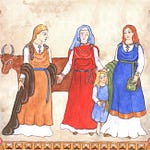
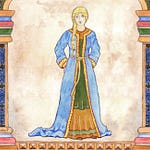
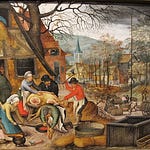
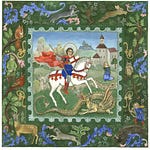



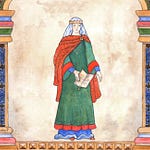
Share this post